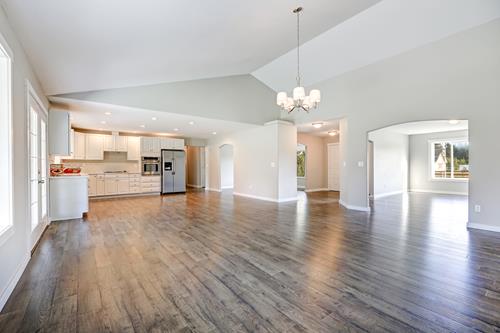A primary component of becoming eligible to buy a home is having a down payment, which often takes time and saving to create.
Homeownership is a huge part of life’s journey, but the tasks that lead up to purchasing and owning a home can make it seem a little daunting – especially when it comes to setting aside a large chunk of change for the down payment.
A down payment is the initial payment made on the purchase of a home and it ensures the homebuyer’s financial commitment to the purchase of the home.
Some homebuyers shoot for 20% down as that eliminates the private mortgage insurance requirement in many cases. However, many loan programs have down payment requirements of as little as 3-5%. Your loan originator can help you find the best fit for your situation, but it’s always a good rule of thumb to have some money set aside regardless.
So, how do you come up with a down payment? Follow these steps.
1. Create a Clear Goal
Homeownership goals vary from person to person and family to family. Having a conversation with your spouse, family members, friends, loan originator, etc. can help you better determine your goal in creating a down payment savings fund.
Start by thinking about the home you want to purchase. Determine the location you are interested in living, the size of home, and style you are looking for and begin doing your research.
2. Create a Savings Fund
By creating a separate space for your down payment savings, you are not only less tempted to use that money, but you are more inclined to begin adding to the fund. You can do this through your bank and start whenever you feel ready.
After opening your account, you can begin transferring little sums of money here and there, or even a fixed amount every month. By building a fixed dollar amount to be transferred into this account, you can watch it grow automatically. This is a convenient option and can be a strong way to begin building the fund.
3. Create a Budget and Stick to It
This step in the savings process takes on a larger role than you may realize. By creating a quarterly, monthly, or weekly budget, you can meet your goals and stay on track with your timeline.
If you already have a budget set (or once you’ve set it), take some time to decide what you may be able to cut down or eliminate. Consider what you spend the most money on and consider selling some of your older, unused items. Believe it or not, these little adjustments can add up!
4. Find Extra Ways to Earn
If you have extra time or a passion outside of your primary source of income, don’t be afraid to capitalize on it. Even temporarily, earnings from a second job can make substantial contributions to your down payment savings fund.
If you enjoy driving, Uber or Lyft are constantly hiring. If you enjoy knitting, consider opening an Etsy shop can give you an extra source of income as well. This is by no means a necessary part of saving for a down payment, but it can certainly boost your timeframe.
Ready to get started on your homeownership journey? Find a home loan expert in your area or visit our Mortgage Basics page.





